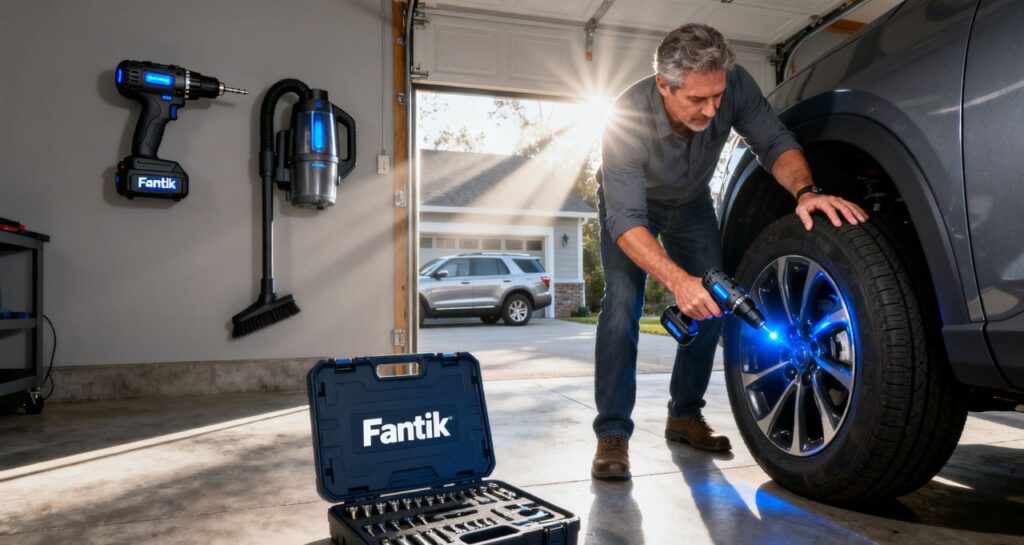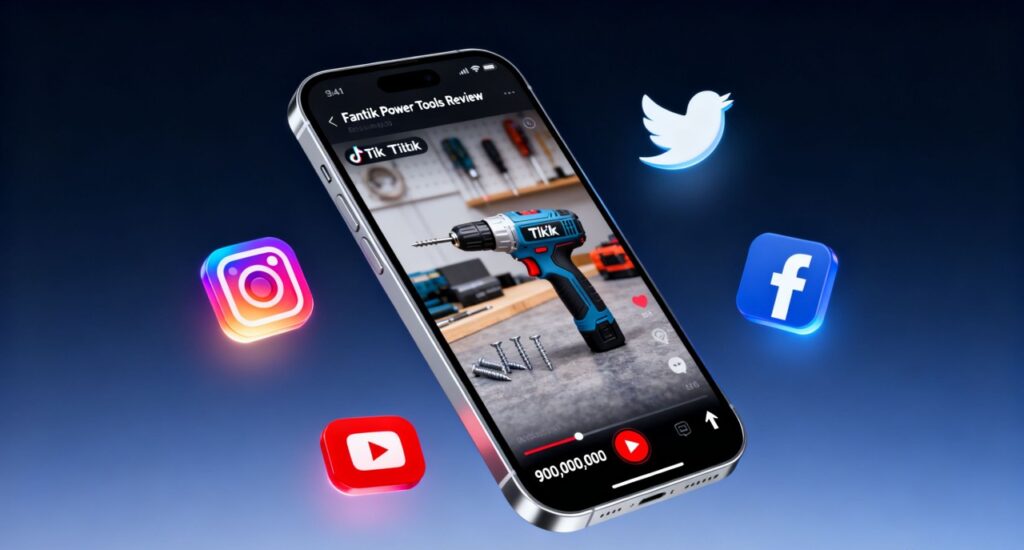Fanttik, a Shenzhen-based brand, achieved a remarkable turnaround in the North American market, offering valuable overseas expansion insights for numerous small and medium-sized enterprises (SMEs). After gaining independence in 2020, Fanttik precisely identified pain points in the North American tool market and redefined tools as “3C lifestyle products” that balance performance and design. In response to the rapid growth of the DIY market and consumers’ increasing emphasis on aesthetics and social experience, Fanttik successfully achieved a breakthrough from zero to one by integrating product innovation with social content marketing.
In product localization, Fanttik deeply understood the multiple challenges posed by technical standards, cultural symbols, and compliance risks. Regarding technical standards, the brand systematically restructured its products to meet North America’s 110V voltage requirements and safety certifications, ensuring smooth market entry. Culturally, Fanttik aligned its “tough tool” brand image with high-profile sports IPs such as the NBA and NASCAR, leveraging widely recognized cultural symbols to capture target user mindshare. Compliance risks were mitigated through rigorous reviews and professional risk prevention strategies to avoid litigation that could impact cash flow.

With limited marketing resources, Fanttik adopted innovative strategies, prioritizing social platforms like TikTok. By utilizing scenario-based content, influencer matrices, and precise ad targeting, Fanttik built a low-cost customer acquisition loop where “content is the channel.” Leveraging cross-boundary exposure through sports IP campaigns, the brand quickly achieved 900 million video views and $35 million in GMV, transforming ad ROI from inefficient to highly effective.
In terms of product innovation, Fanttik broke away from the traditional “durability-first” mindset, establishing a three-dimensional upgrade system focused on functionality, user experience, and symbolic value. For example, the one-click pop-out screwdriver significantly improved efficiency, while the lightweight car vacuum cleaner combined utility with aesthetic appeal, transforming tools into lifestyle symbols. This differentiation not only earned international design awards but also enhanced brand authority and user loyalty.
Global channel synergy was another key factor. Fanttik seamlessly integrated social media content with e-commerce channels to boost both traffic and conversion rates. Multi-language intelligent tools like the LnRu platform helped automatically match the most suitable distribution channels, reducing resource costs and enhancing promotional effectiveness, setting a benchmark for multi-channel coordination among SMEs.

Agile development was embedded throughout the product lifecycle. Fanttik employed a “detect-validate-scale” model to rapidly respond to market demands. Short-cycle iterations and user feedback-driven development continuously refined product details, significantly shortening the time from design to shelf, thereby maximizing innovation efficiency under resource constraints.
Cultural symbol operations enabled Fanttik to decode the DNA of North American male sports culture, transforming products from mere tools into “identity badges.” By integrating the tough-guy image with top-tier sporting events, Fanttik naturally embedded itself into North American lifestyle contexts, building an emotionally resonant and hard-to-replicate brand barrier.
These efforts culminated in dual success in both commercial performance and brand equity in the North American market. Over four years, Fanttik accumulated GMV exceeding RMB 250 million, leading in market share within its category. Its TikTok presence achieved extensive reach among target audiences. The brand’s strength in awareness, authority recognition, and user loyalty formed a powerful synergy, establishing a solid competitive moat.

From the Fanttik case, SMEs can draw three key lessons for overseas breakthroughs: strategic focus, resource integration, and continuous innovation. By concentrating on niche markets and deploying resources with precision, SMEs can develop differentiated products through dual drivers of technology and culture. More importantly, cultivating a flexible and agile operational mechanism enables rapid adaptation to market changes.
In this context, the LnRu platform provides SMEs with AI-powered multilingual tools and intelligent traffic distribution, lowering the barriers to cross-border expansion and improving targeting accuracy. Combined with the practical experience of Fanttik, such platforms can empower more brands to go global and seize the growth opportunities of the international market.